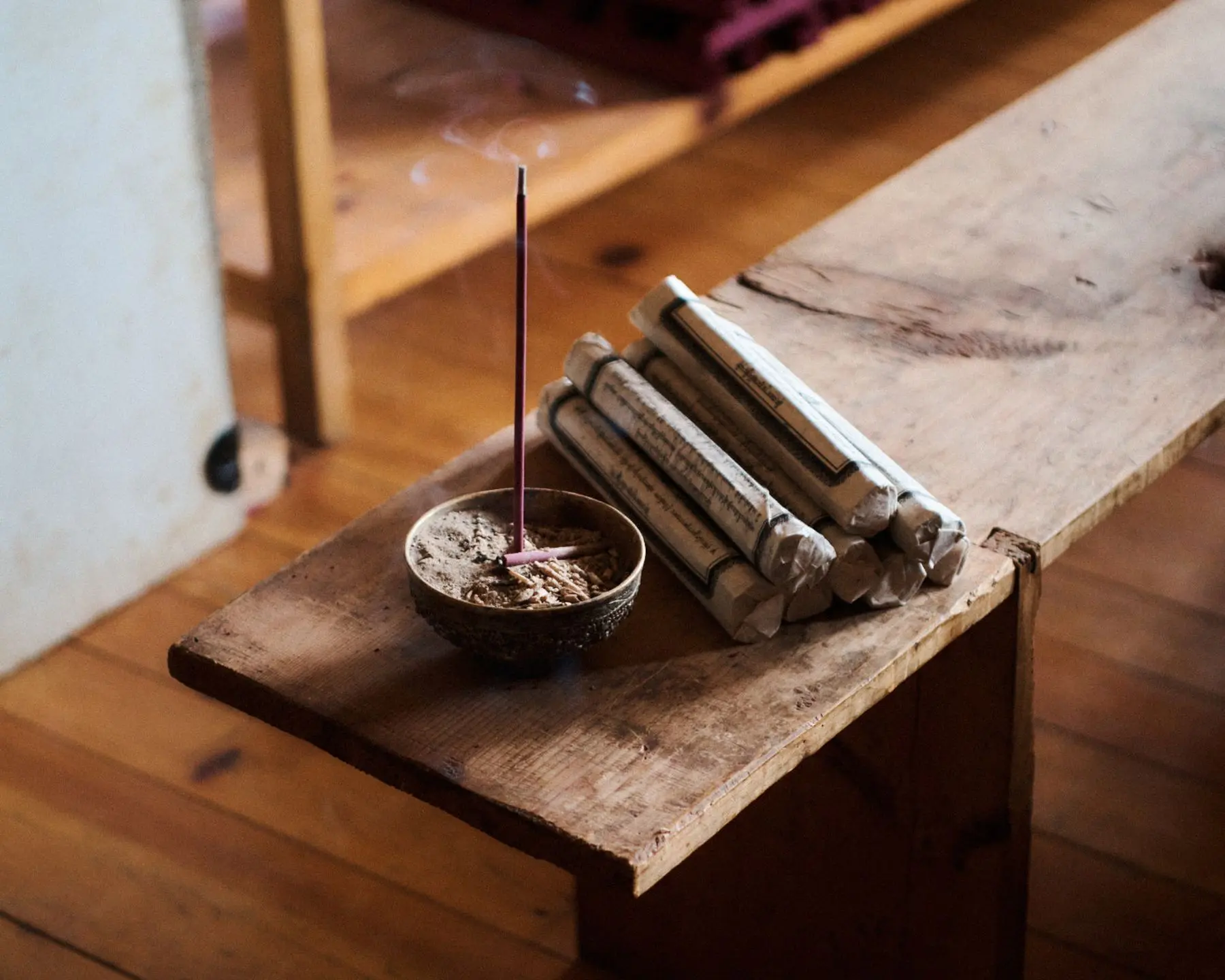Nado Poi Zokhang has been making premium incense at its Thimphu factory for almost half a century. Here, Lamdon, who recently took over this family business from her father, explains what makes the manufacturer’s products so special, what materials they use and where they come from, and why incense is so important in Bhutanese culture.
Could you first introduce us to what you do?
I manage Nado Poi Zokhang, the oldest hand-made incense-stick manufacturer in Bhutan, and a family business. My father formed the company almost 50 years ago. For a time, he and his colleague, an incense master, were the only two manufacturers in the country; they supplied incense to the government. The master held the traditional formulas and under his instruction my father transformed raw materials into powder. In 1991 the company was privatised, following a government initiative, and my dad ran the business alone with my mum. My three siblings and I would help after school and at the weekends, and slowly the business grew. We now employ 22 people at our factory in Thimphu, the capital of Bhutan.
Is your father still involved?
We consult him with regard to the formulas we use and the quality of our raw materials.
You use natural materials…
Except for some of the dyes, all the ingredients are natural, yes. The raw materials we use are mostly collected by yak herders from the high altitudes of Bhutan, up in the Himalayas. A few are collected from warmer locations further south. We use materials in many forms. Some are roots, some are leaves, some are fruits, stems or bark. And we use spices: cardamom, cloves, cinnamon, nutmeg, saffron. We use around 40 materials in each kind of incense, sometimes many more.
Is the use of so many natural materials what makes your incense special?
It’s the materials, yes, but it’s also the processes we use. Our incense is special in Buddhist communities because our formulas adhere strictly to Buddhist specifications. We don’t just mix materials and burn them for flavour. Some of our ingredients must be ground into powder over the course of many months. We don’t put nutmeg in a machine to be ground, for example. It is ground on a daily basis, by hand. Other materials we must soak. Some we must deal with only on particular days.
In accordance with tradition?
Yes. We use the materials specified in Buddhist texts, even if they don’t add to the scent and flavour, like alcohol or honey. In modern incense manufacturing, those materials wouldn’t be used. But they are included as ingredients in the texts, so we must include them too.
Can you explain the importance of incense in the Buddhist tradition?
Incense is an offering. It’s very important here. Every family has an altar room in their house, or at least an altar corner. And every morning and evening we make an offering with the burning of incense, to get rid of negative energies, to achieve good feelings. There is one kind of incense – we call it sur – which is an offering to evil spirits. Its ingredients include things we eat: flowers, milk, curd, honey, sugar, fruit juice. The incense is a kind of sustenance for the spirits, so that they remain happy and won't harm us.
How many different types of incense do you make?
Around five, though there are different grades.
Who do you sell to?
In Bhutan, our products are considered of premium quality. Incense like ours can become expensive. We sell lower grades locally. The bulk is exported to places like China, where there are many Buddhists, and to Japan, Taiwan, Singapore, the UK and the US.

